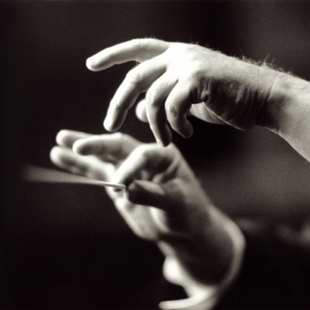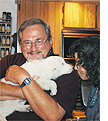| current issue |
| features |
| Crossing the Frank |
| WWII Warbirds |
| The Casino Club |
| The Harriman Trail |
| arts |
| Dick Brown's choral |
| Sculptor R.C. Hink |
| Sun Valley Opera |
| Local Shakespeare |
| living |
| Garden Rooms |
| Sheep Wagon Redux |
| recreation |
| The Fosbury Flop |
| Motorcycle the SNRA |
| Hiking the Smokys |
| dining |
| Wines of Summer |
| All Things Cheese |
| Ice Cream |
| calendar |
| Summer 2004 |
| to-do |
| Sun Valley Essentials |
| listings |
| Galleries |
| Dining |
| Fitness |
| Golf |
| Equipment Rentals |
| Outfitters + Guides |
| Lodging |
| maps |
| Ketchum + Sun Valley |
| Hikes on Harriman |
| Local Art Galleries |
| the guide |
| Last Winter |
| Advertising |
| About Us |
| copyright |
| Copyright
© 2004 Express Publishing Inc. All Rights reserved. Reproduction in whole or in part in any form or medium without express written permission of Express Publishing Inc. is strictly prohibited. |
Produced & Maintained by Express Publishing, Box 1013, Ketchum, ID 83340-1013 208.726.0719 Voice 208.726.2329 Fax info@svguide.com |
| The
Sun Valley Guide is distributed free twice yearly to
residents and guests throughout the Sun Valley, Idaho resort area
communities.
Subscribers to the Idaho Mountain Express will receive the Sun Valley Guide inserted into the paid edition of their newspaper. |


photo by Doug Lawrence
For
the love of song
Dick Brown charms and
inspires
valley choral groups
by Pat Murphy
If the hills of Idaho seem more alive with the sound of music, especially singing, it’s because Dick Brown abandoned a pledge to slow down after his 1999 heart attack and bypass surgery.
Instead of a reduced pace, Brown, 57, is a blur, moving restlessly and relentlessly between musical projects. An admitted Type-A personality, he is driven by the credo that there are “a lot of things to be done a lot better.”
His wife of 32 years, Billie, 53, sighs and suggests a more realistic explanation.
“He can’t say ‘No!’”
What a blessing that is for music wherever Brown appears. Hundreds in Idaho have felt the magic touch of this music man, who transforms adequate singers into majestic choral ensembles and, in so doing, has created a growing regional reputation in choral music for the Wood River Valley.
Music to Brown isn’t work. With a passion bordering on the spiritual, he calls the singing voice “the perfect instrument—a singer gives the most personal inner self.”
An ample figure of a man (6 feet, 240 pounds), Brown has the professorial look of a master teacher who expects undivided attention and gets it—steel gray hair and Van Dyke beard, rumpled casual attire, and flamboyant arm and hand gestures that punctuate and accent his conductor’s instructions. As well, his commanding use of musical terms keeps singers glued to the maestro.
Reciting a list of Brown’s activities is risky; he could impulsively add a project without notice.
For now, however, Brown is director of the Upper School Music Program for The Community School in Sun Valley; music director for St. Thomas Episcopal Church in Ketchum; founder and artistic director of the 90-voice Caritas Chorale of the Wood River Valley; artistic director for the Anam Cara Chamber Choir of Idaho in Idaho Falls (Anam Cara is Gaelic for “beloved friend”); founder and artistic director of Choral Rendezvous, a national summer choral festival in Challis, and director of the Sun Valley Summer Symphony Music Conservatory.
 Out
of this latticework of activities have come remarkable results—teen
students learning music composition, performing choruses and choirs,
music and arts festivals, musical shows such as “Jesus Christ Superstar”
and, coming up in 2005, a Caritas Chorale production of original music
and libretto glorifying the Lewis and Clark Expedition (1804-1806) in
the Northwest, complete with a 25-piece orchestra.
Out
of this latticework of activities have come remarkable results—teen
students learning music composition, performing choruses and choirs,
music and arts festivals, musical shows such as “Jesus Christ Superstar”
and, coming up in 2005, a Caritas Chorale production of original music
and libretto glorifying the Lewis and Clark Expedition (1804-1806) in
the Northwest, complete with a 25-piece orchestra.
Brown’s following of audiences and performers has cult intensity. Moreover, word of Caritas Chorale’s musical mastery is spreading: The Idaho Commission on the Arts provided Caritas (Latin for “charity” or “compassionate”) a $2,950 grant, and the 90-voice group has been invited to perform in June 2005 in Salzburg, Austria, and Florence and Venice, Italy, with songs of the West.
Brown’s appeal covers the age spectrum (from teenagers to a 78-year-old) and the gamut of professions (student, real estate broker, physician, attorney, contractor, teacher, firefighter, graphic designer and more).
His visions are bold and ambitious. He predicts the Wood River Valley will be home in due course to an international choral festival performing in a yet-to-be-built theater of more than 650 seats. Chorale performances involving 100 voices and a 60-piece orchestra will not be that unusual.
A design-specific facility, in fact, is a major deficiency for Brown’s groups as well as other performing arts groups in the area. The largest auditorium at the Presbyterian Church of the Big Wood doesn’t have the organ preferred by Brown. And St. Thomas Episcopal, which has the organ he prefers, is too small for a proper performance of 90 voices.
Despite a fatiguing schedule, regardless of demands on his time, and in spite of the tedium in shaping a disparate collection of non-professionals into disciplined harmony, Brown preserves an engaging calm and imperturbable patience—always quick with humor.
Not just any humor, but Mississippi Southern humor.
Glancing around during rehearsal for the unknown singer holding a note too long, Brown scans the Caritas Chorale and says wickedly and with a wink, “I’m going to find you and root you out like a pig after truffles.”
Brown’s wit and charming accent, which invariably ignite laughter, serve as skillful tools in enforcing his demand for precise pitch, correct pronunciation of foreign words, concise volume, and intricate meshing of harmonic phrases.
Perched in front of a black metal music rack on a high stool he calls his “throne” during chorale rehearsals this spring at St. Thomas Episcopal Church, Brown swivels right, then left, then back to the center to speak, alternately to baritones, basses, altos, tenors and sopranos. Brown fidgets, nervously pushing his glasses up on his nose while critiquing aloud several bars of music, tapping his feet, then riffing his fingers in the air as though he’s plinking a piano, a gesture for getting attention.
During a rehearsal for the demanding Caritas performance of “Solemn Mass” and “Quatre Motets” in Latin and French, accompanied by organ, Brown waved off singers when their volume was too loud for a spiritual passage, telling them in mock irritation, “Hey, you don’t yell at God!” Laughter.
He cuts off the chorale at another point, explaining, “It’s crescendo molto, not crescendo melt.”
When he wanted a robust climax to a passage, he said, “And here’s where John Wayne comes in ... .”
The Caritas performs with organ and a 50-piece orchestra. Rehearsals generally are accompanied by piano, and by Brown, who sings along to make up for a missing baritone or tenor during rehearsal and to emphasize how he wants a passage performed.
He begins each rehearsal “with a sound in my head” he wants the chorale to achieve by the end of its one-hour rehearsals.
Carl Richard Brown, one of seven children in his family, made his way 1,300 miles from Mississippi to a small Idaho county because of improbable coincidence and spontaneous generosity of new friends.
First, the coincidence.
Although a
conservatory-trained cellist, Brown concentrated on musical conducting
and directing Broadway road companies, operating out of the
Mississippi capital city of Jackson. Belying stereotypes often applied
to the Deep South, Jackson is an international cultural center. Its
annual international ballet competition, for example, attracts the
world’s finest dancers.
Brown, who also was a candidate to direct the New Zealand State Chorus, needed a break from this pressure cooker routine that kept him on the road in the United States and Europe.
The perfect time out: rock hounding in Idaho!
And why not? Outside of music, Brown’s obsessions are geology and American history. So, when he and Billie by chance visited a small town 60 miles north of Ketchum called Stanley in 1974, a love affair began. He discovered what he calls “secret places” filled with troves of unusual rocks.
In 1989, on a longer visit, Brown discovered Challis, down the Salmon River from Stanley, and the Episcopal Church with its small choir that needed help. Thereupon, groundwork was laid for the annual Challis Chorale Rendezvous, now in its 10th year, attracting more than 100 singers for performances and participation in a choir camp.
Then came the deal Brown couldn’t refuse.
So overcome were festival participants by Brown’s masterful musicianship, they asked him to remain in Idaho, promising paying jobs in music—and as many rocks as he could collect.
 Ketchum attorney
Wallace “Chip” Mills, a Caritas Chorale singer as well as organ and
piano accompanist, and fellow chorale members Doug Taylor, a retired
executive, and Dave Carter, a building contractor, arranged for St.
Thomas Episcopal Church to hire Brown as choir director and The
Community School to take him on as the first director of an upper school
music program. Billie, a violinist and singer in the Caritas, was hired
as acting director of the Big Wood Preschool and a part-time math
instructor at the College of Southern Idaho.
Ketchum attorney
Wallace “Chip” Mills, a Caritas Chorale singer as well as organ and
piano accompanist, and fellow chorale members Doug Taylor, a retired
executive, and Dave Carter, a building contractor, arranged for St.
Thomas Episcopal Church to hire Brown as choir director and The
Community School to take him on as the first director of an upper school
music program. Billie, a violinist and singer in the Caritas, was hired
as acting director of the Big Wood Preschool and a part-time math
instructor at the College of Southern Idaho.
In what little spare time he salvages, Brown also gives private singing lessons.
Confidence in Brown’s ability to make singing a major new pastime has been fully justified.
Carter, part of the chorale’s bass-baritone section and who takes private singing lessons with Brown, is unrestrained in his praise of Brown. “What an energy source. A spark of goodness. He radiates happiness.”
“Dick has provided musical inspiration to the entire Wood River Valley,” adds Ann Taylor, a soprano who, as an unpaid assistant, helps Brown juggle his routine.
At The Community School, where he teaches four classes and a 60-voice chorus, students in advanced music composition use such words as “awesome,” crediting Brown with firing up new passions for music. Several talk of careers as composers. The school’s computer science instructor, Mike Wade, says Brown “has made us like a (complete) school” with the music program.
Others describe Brown in a shower of adoring words: charismatic, skilled teacher, brilliant musician, friend, funny, witty, exacting, charming, understanding, encouraging.
Brown isn’t all business, however. Outgoing and convivial, he has a weakness for playful wackiness. While rock hounding in the Challis area, the Browns and several friends rescued a homeless, hungry cat they promptly named Harriet of Challis and returned to Ketchum to give it a home. The Browns, who have four cats, and friends now annually celebrate Harriett’s rescue with a dress-up party—the last attended by Brown in tuxedo, top hat and opera cape.
For teens who miss a class at The Community School, Brown claims, smiling, their penalty is to bring him a rock for his collection, which he ruefully admits are “all over the house.”
Is there no end to Brown’s talents for exciting musical instincts?
One of his students is learning to play the didgeridoo, the large wooden bass trumpet of the Australian Aborigines with the eerie, mystical moaning sound. •









